
11 interesting approaches to guest checkout design

While it was once common practice to ask customers to register before moving into checkout, some form of guest checkout is now a standard option offered by most ecommerce sites.
Forms and time-consuming purchase processes are often too high of a conversion barrier for modern shoppers. The downside for retailers, of course, is that fewer accounts get created. That means less opportunity for re-marketing purposes.
Still, at the end of the day, getting customers through the door is typically deemed most valuable and so the guest checkout experience remains.
Why offer guest checkout?
- It can reduce abandonment rates. SaleCycle data from a consumer survey found 23% had abandoned a site because they had to create an account.
- It’s much easier for mobile users. Each extra form field or step can be a chore for mobile shoppers.
- It gets shoppers straight into payment forms. Without registration, potential customers aren’t presented with a point that makes them stop and think about continuing.
- It makes checkout seem like less work. In reality, the same details are generally entered while costumers complete guest checkout, but the flow makes it seem easier for users.
- You can still provide a registration option. Retailers want customers to register but they can still add the option to create an account at the other end of the checkout process.
Different approaches to guest checkout
- While the end result is the same (entering checkout without having to register first), there are a variety of approaches to guest checkout for retailers to choose from.
- Some push a bit harder for registration, others seem to be intent on removing as many barriers as possible for customers.
LEGO
- The classic approach is to show a page offering three options after the shopping basket page. These are normally to log in, create an account, or checkout as a guest.
- This example from Lego presents all three of those options.
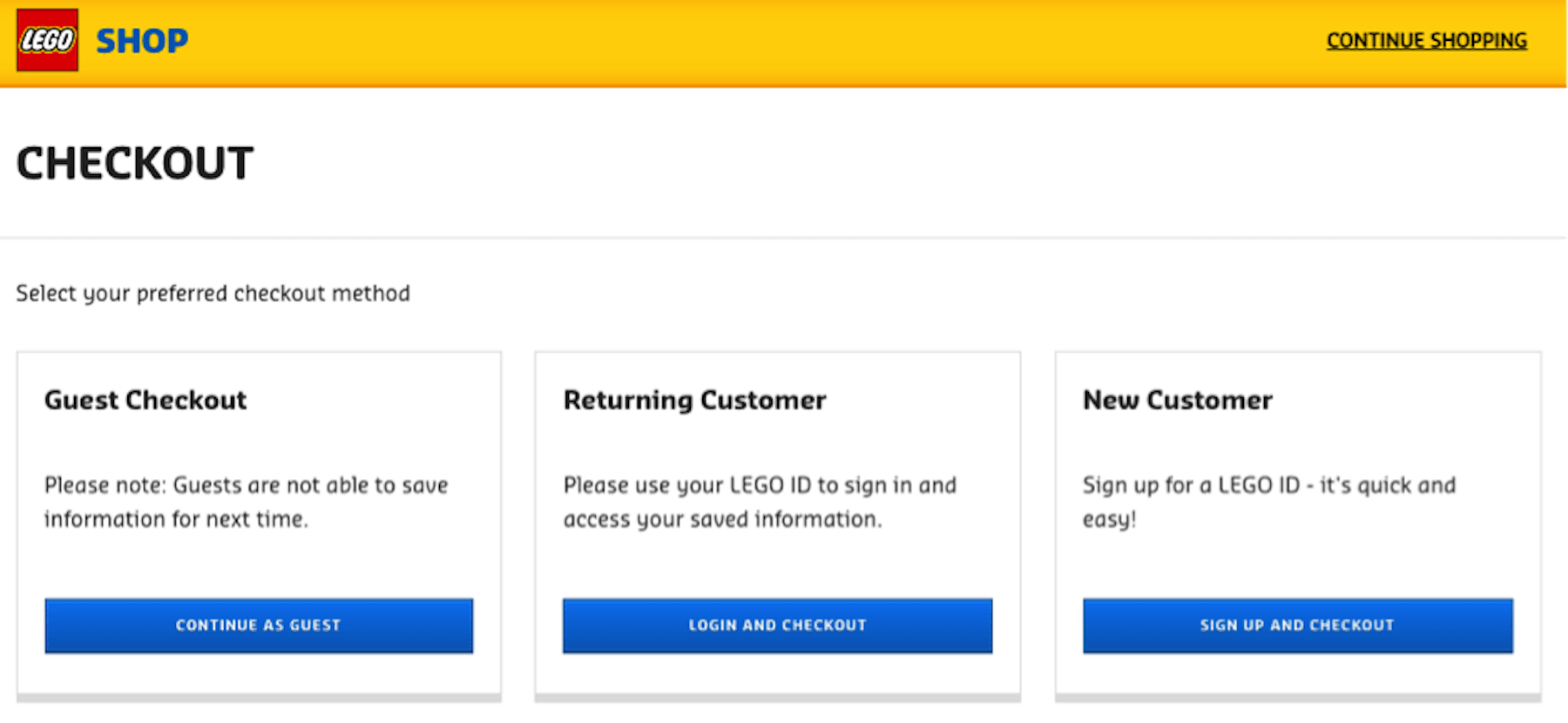
Lowe’s
- US retailer Lowe’s presents customers with the option of logging in if they already have an account or using guest checkout. It reassures people that they can create an account later if they want to.
- The third option, Visa Checkout is an interesting one. It’s relatively new, but has been adopted by a few retailers so far and reached 20m registered users last year.
- It allows Visa card holders to register with their address and payment details so they only need to login with a username and password to checkout. It saves them time on entering card details since it links directly to their Visa information. Like PayPal and similar methods, it’s another alternative to registration for retailers to offer.

- Back to the registration issue, Lowe’s adds this option just before the payment step, selling the benefits of creating an account.
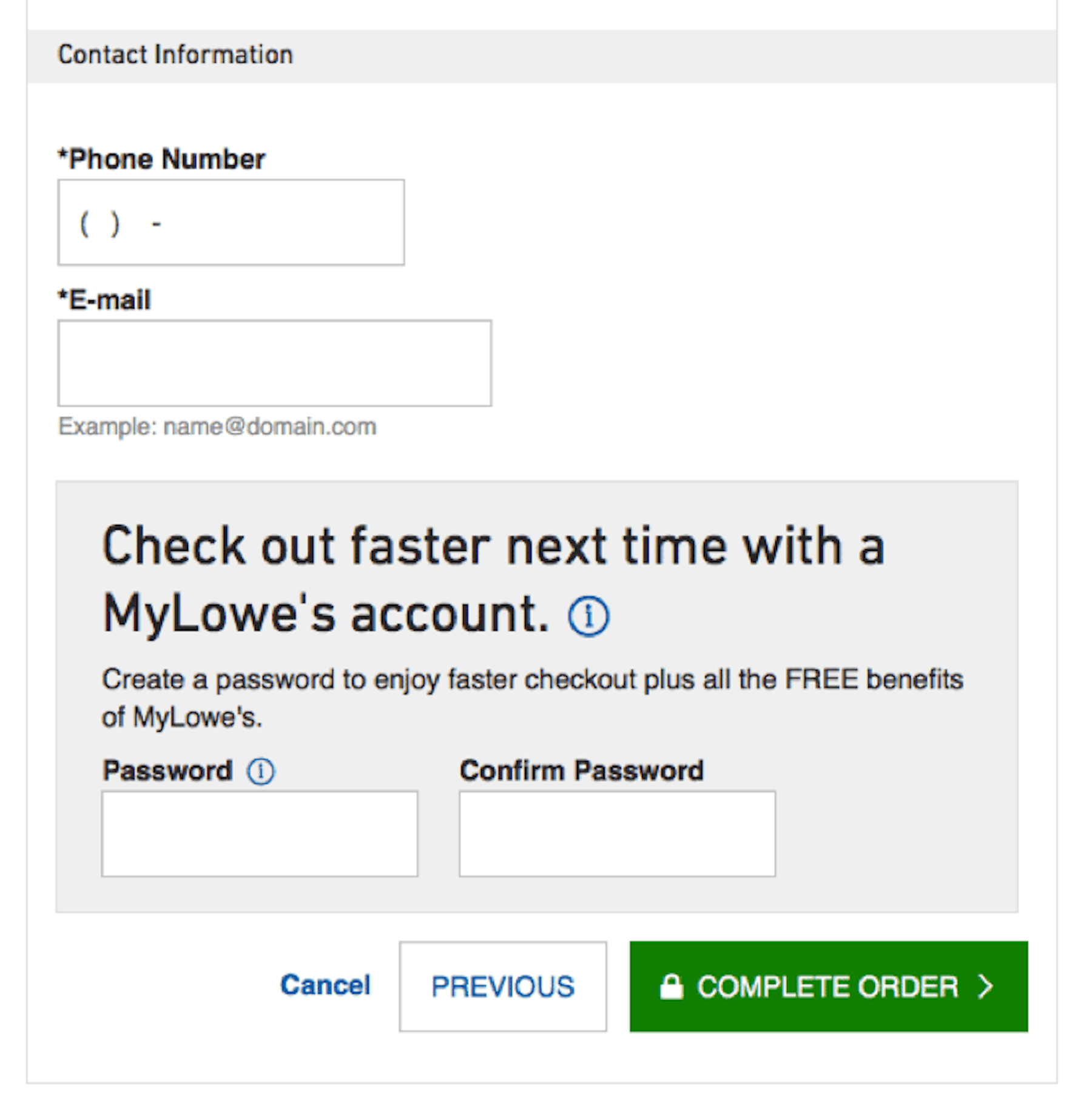
Bellroy
- Bellroy calls this an express checkout.
- Instead of the usual pre-checkout pages, shoppers go straight from the cart drop-down into this page.
- There’s no dedicated cart page and no guest checkout/registration option between cart and checkout.
- It seems Bellroy has decided to remove any issues around registration in favor of moving shoppers into the checkout process as quickly as possible.
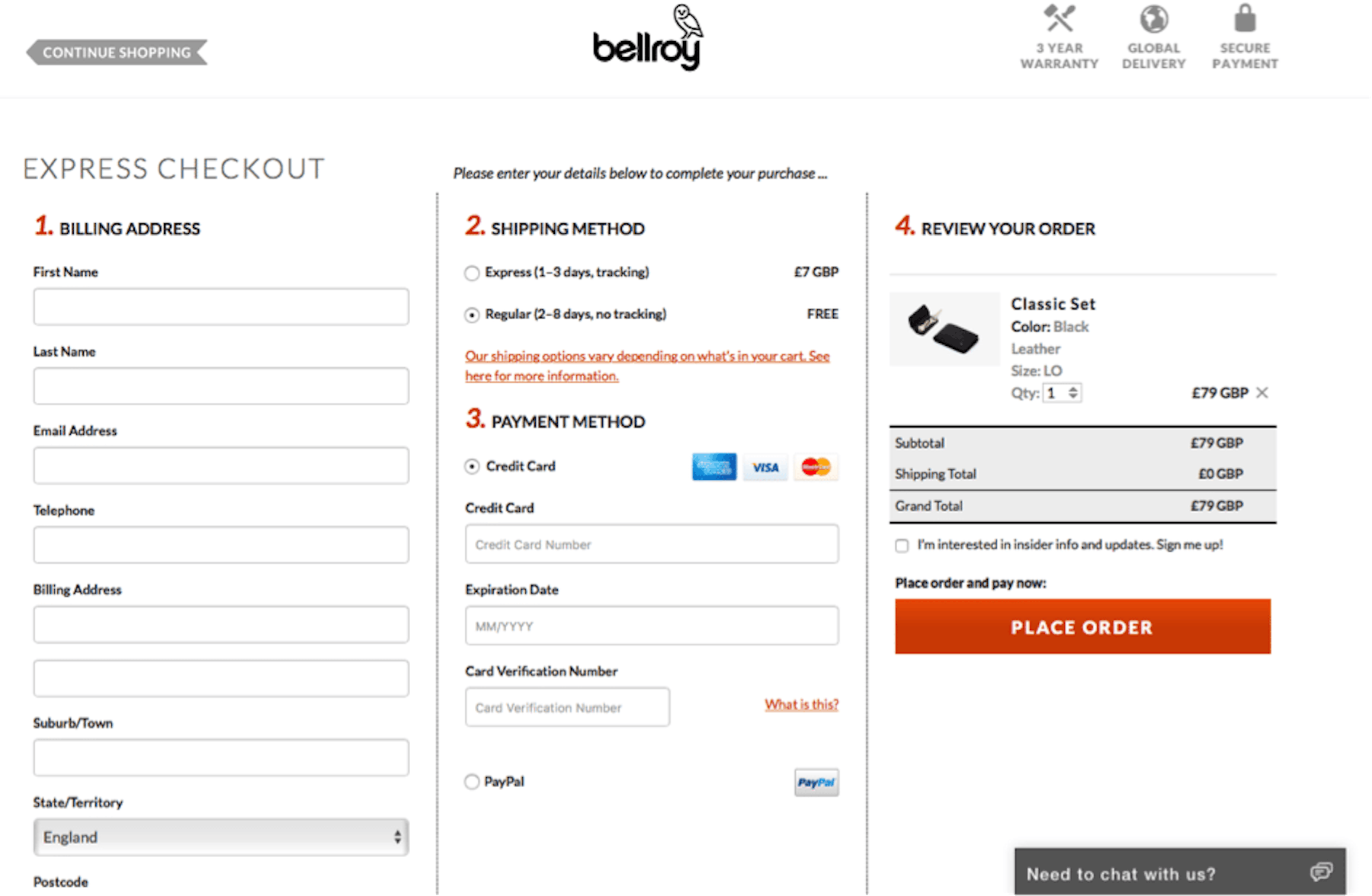
- It’s also a single-page checkout so, with just one page to load, it’s an excellent way to optimize checkout for mobile shoppers.

Nixon
- Nixon sends shoppers to this checkout page straight from the shopping cart page. As with Bellroy, there’s no guest checkout choice, but there is a cart page to review order details.
- Again, it’s fewer steps and no obstacles to checkout, but Nixon does offer the option to create an account during checkout.
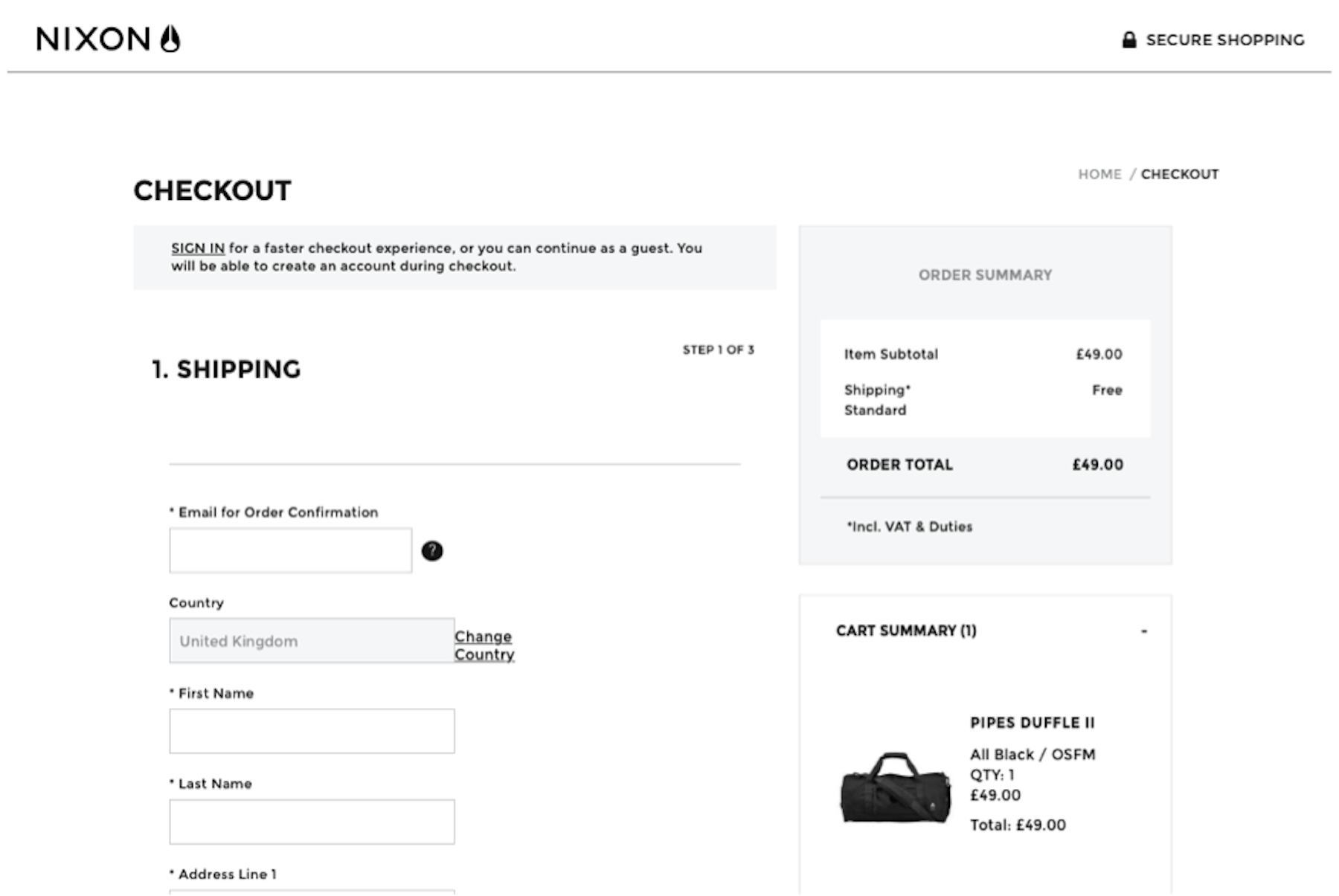
Nike
- Nike lays out the options clearly here, selling the benefits of the Nike+ account, but allowing guest checkout.
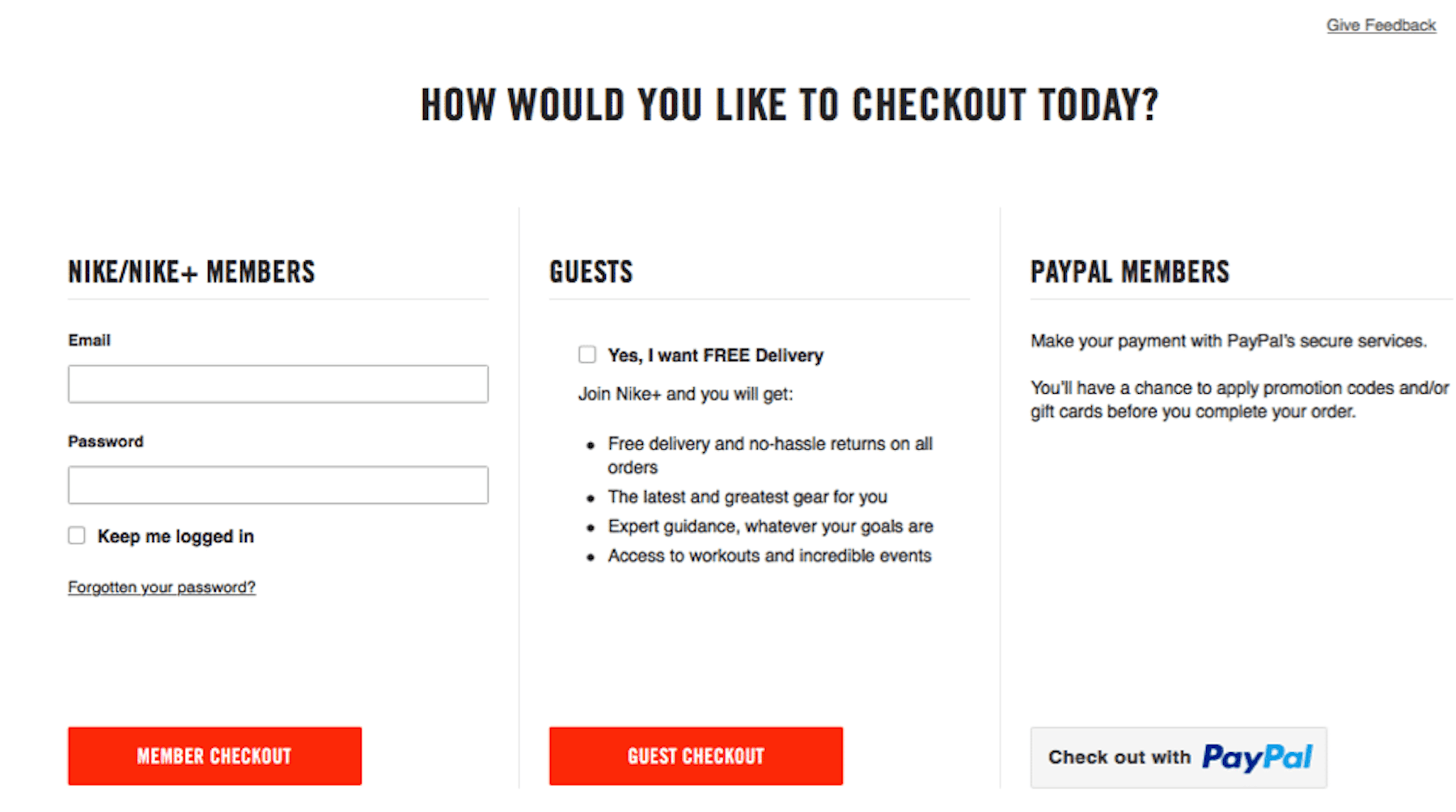
Urban Outfitters
- Urban Outfitters provides a guest checkout option on the checkout page itself. It removes one step from the process and makes it easy for customers to get started with entering payment details.

Crate & Barrel
- Crate & Barrel encourages new customers to use guest checkout, where they can later create an account if they want to.
- It also offers plenty of other non-registration options. Masterpass and Amex are similar to Visa Checkout.
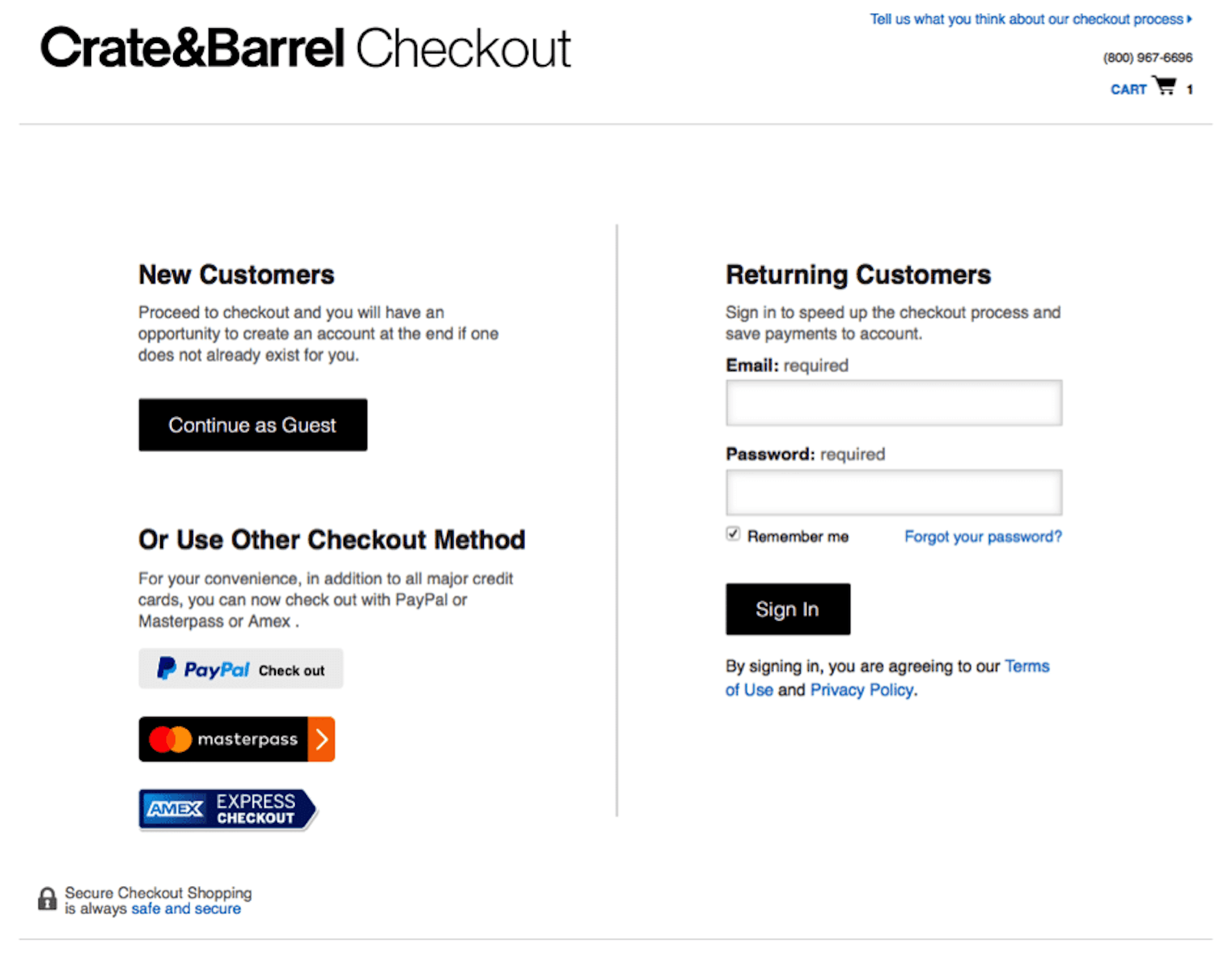
Walmart
- This is interesting as it doesn’t ask for an email as the first step into guest checkout. Instead, they ask for an email along with address details in the next step.
- As with some of the other approaches here, it’s about reducing the amount of work required by customers to get into the checkout stage.
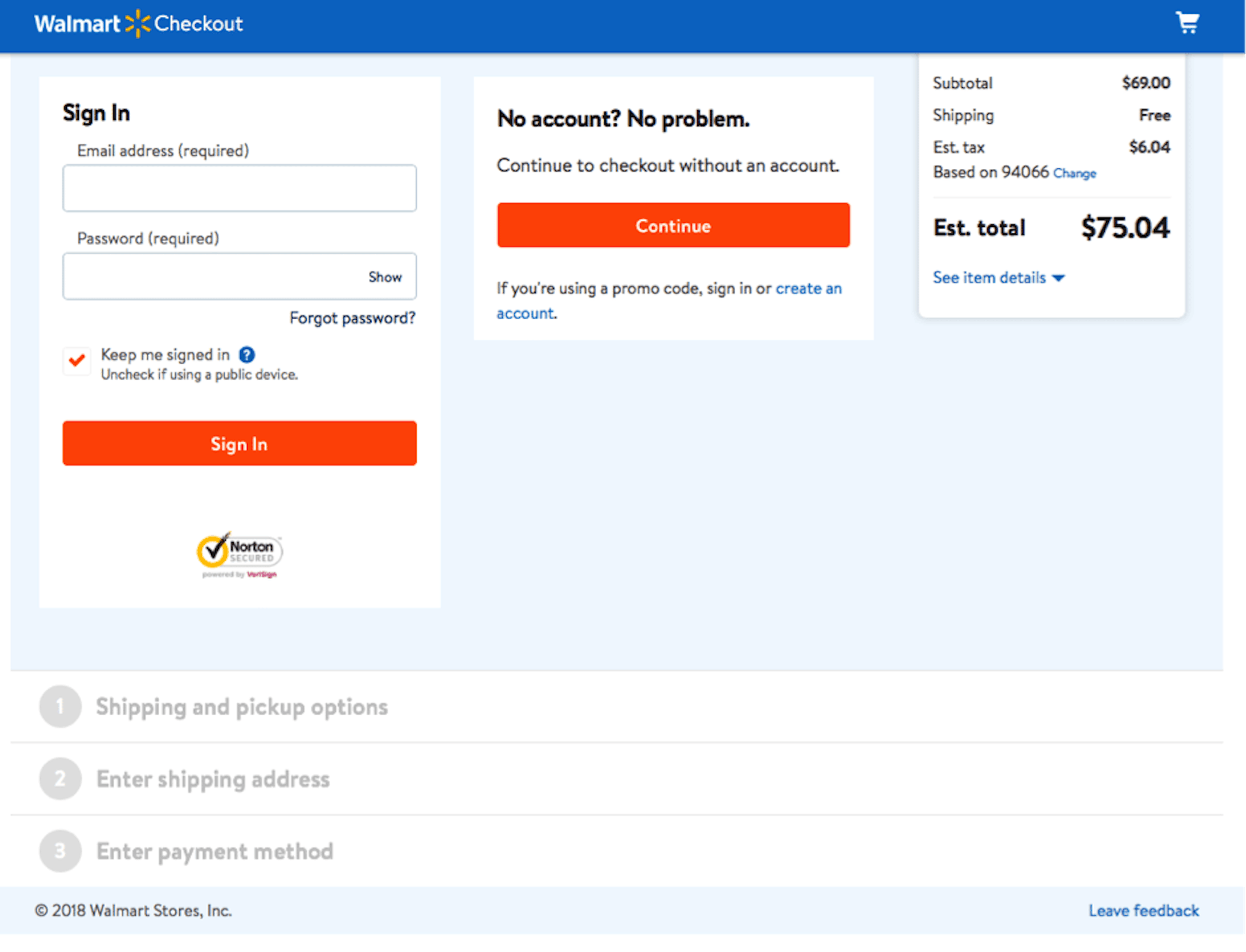
Debenhams
- This pop-up appears when you go from the shopping basket page to checkout, sending new customers to guest checkout and promoting returning customers to log in.
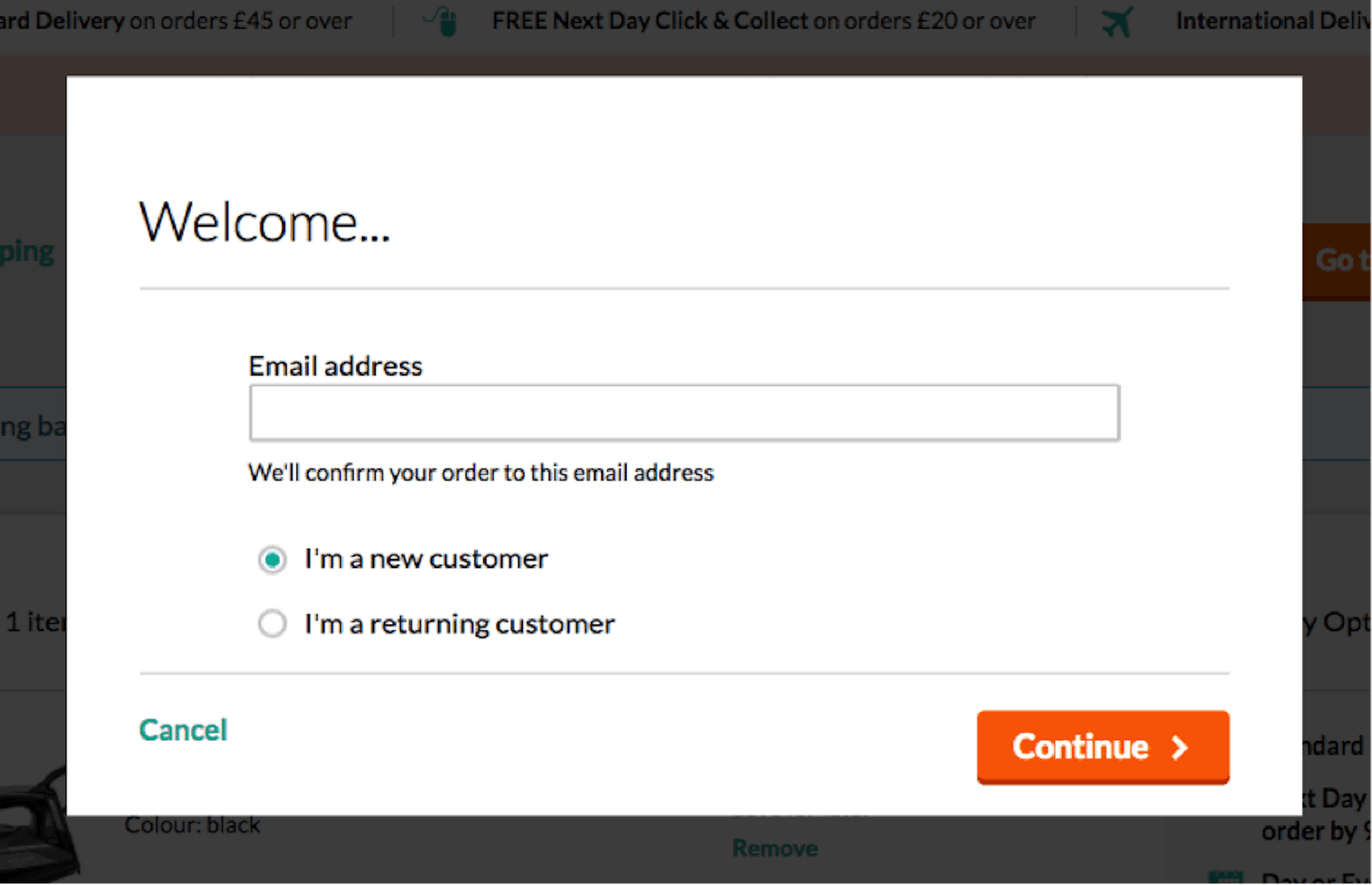
Currys
- No push to register here, Currys just requires an email address for customers to enter checkout.
- Both new and returning customers are told they can either create an account or log in later in the process.

Sear’s
- Another issue to consider when implementing guest checkout is that of forgotten passwords. When a user can't remember their password, they'll often choose to just checkout as a guest.
- However, sometimes – if the retailer finds the guest account using the same email — they’ll prevent them from checking out as a guest and make them reset the password. This can be another source of drop-offs.
- One option is just to allow customers to use an email address whether or not they already used it to register. Sears is a good example of this.
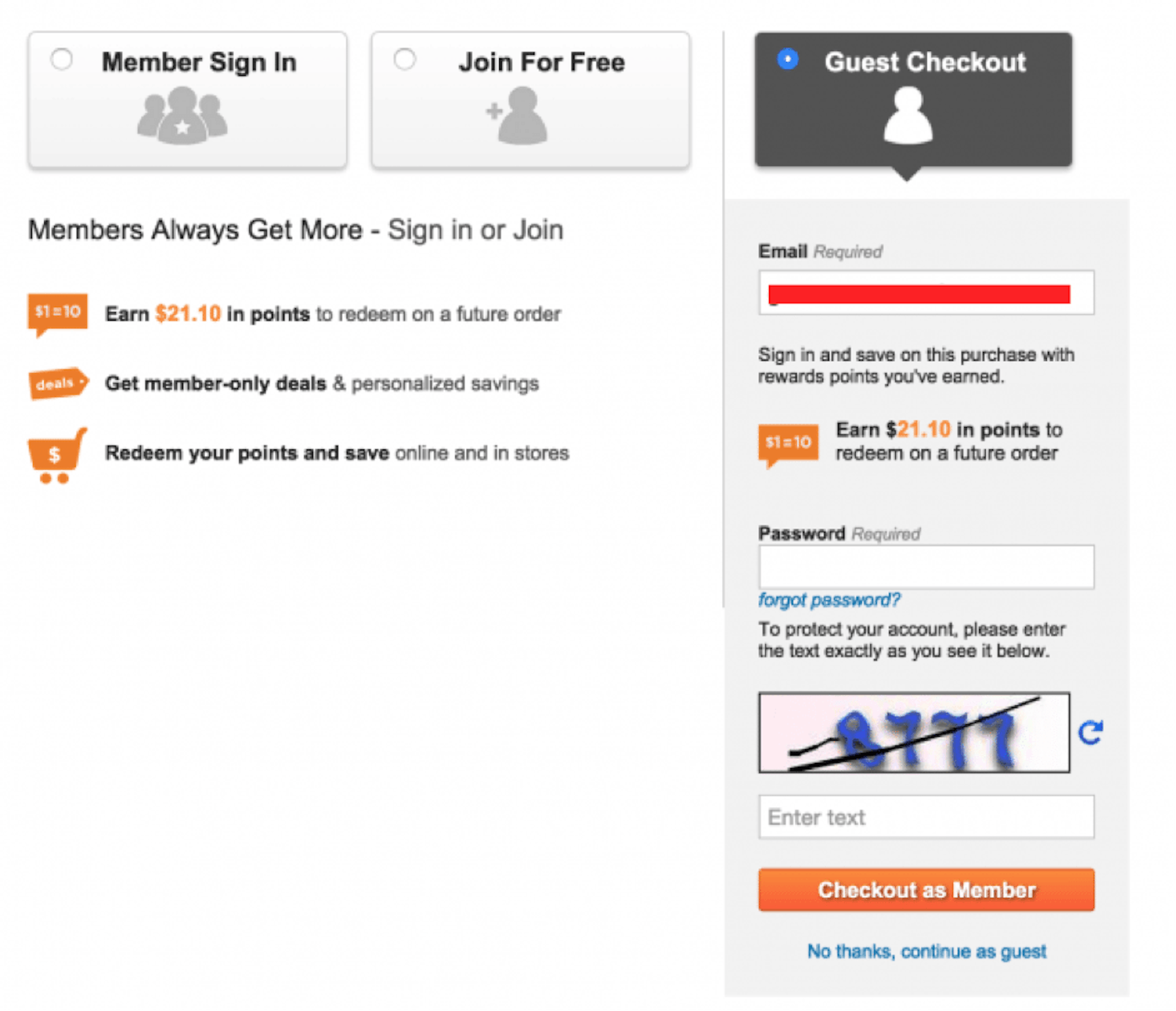
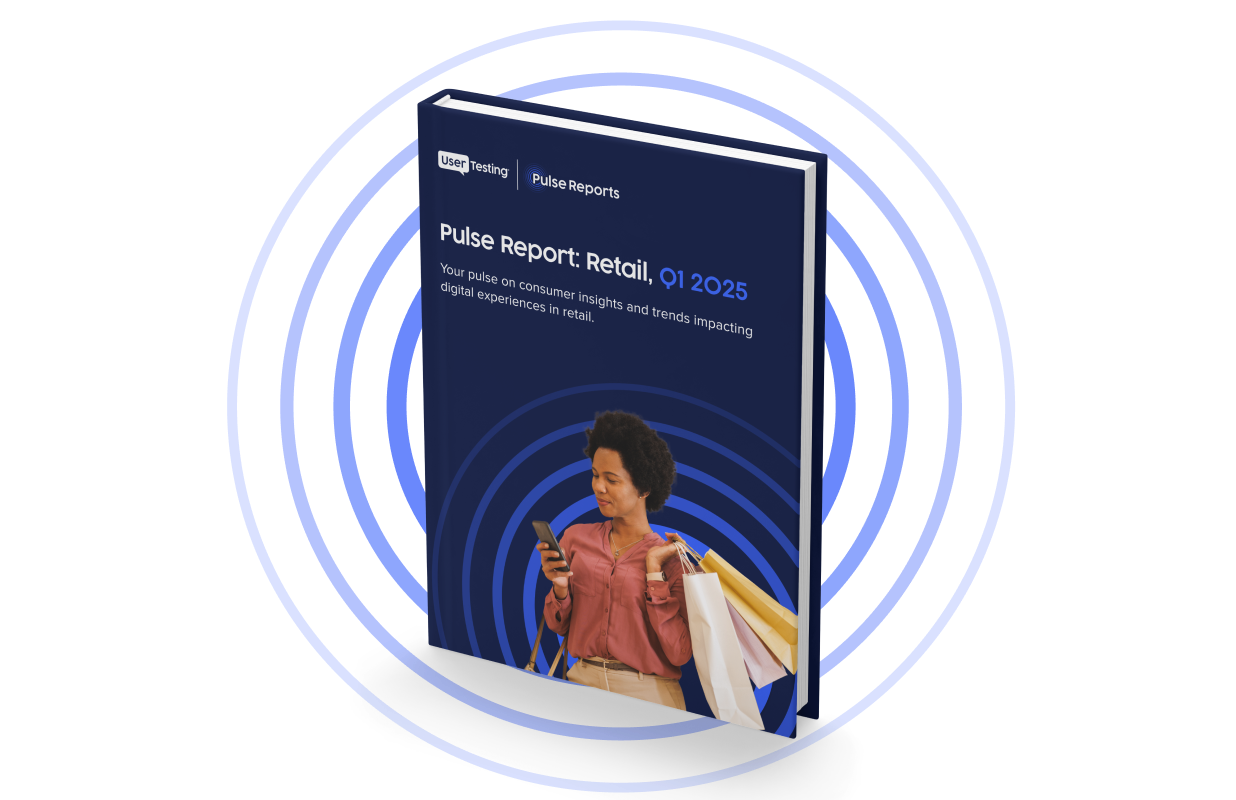
Pulse Report: Retail, Q1 2025
Uncover the drivers behind consumer loyalty and how innovative retailers succeed in this quarterly Pulse Report.





